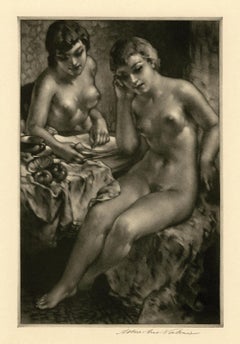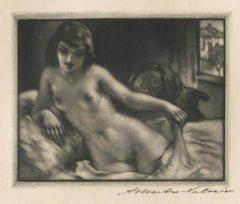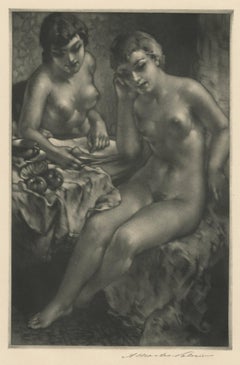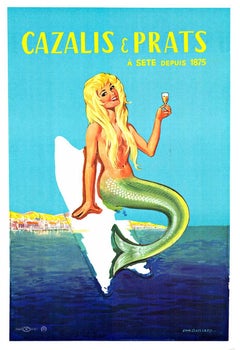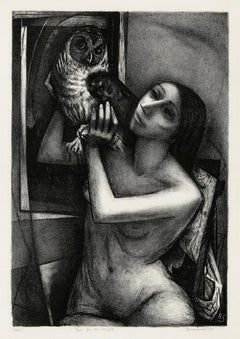Alessandro Mastro-Valerio Prints and Multiples
Painter and printmaker Alessandro Mastro-Valerio was educated at the Salvador Rosa Institute in Naples, Italy (1906–12), and came to the United States in 1913. He settled in Chicago and after a brief period as a commercial artist, established a reputation as a portrait painter. Among his patrons were the industrialists Harvey S. Firestone and Anheuser Busch. Mastro-Valerio was also the owner and editor of the progressive magazine La Tribuna Transatlantica. He wrote and published articles supporting the cause of Italian immigrants. He helped form the Giordano Bruno Club, which campaigned against the entrenched political and religious powers supporting the prevailing bias against Italian immigrants coming to the US at the turn of the century. Mastro-Valerio moved to Ypsilanti in 1919 and received a mural commission the following year from the National Bank of Ypsilanti. Mastro-Valerio taught at Ypsilanti Normal College (now Eastern Michigan University) during the summers of 1922 and 1923. He was also on the part-time faculty at the University of Michigan (1924–26), where after a trip to Italy in 1927, he was appointed to the full-time faculty. In addition to portraits and murals, Mastro-Valerio’s oeuvre includes landscapes, seascapes, and figure studies in oil and watercolor. He is best known for his mezzotint prints of female nudes. His highly sensitive renderings achieved rich depth and luminosity, and his work contributed to the revival of the exacting mezzotint medium in the United States. Mastro-Valerio was a member of the Ann Arbor Arts Center, the Chicago Society of Etchers, and the Design Society(Associate 1951). He retired from teaching at the University of Michigan in 1952. Mastro-Valerio’s mezzotint nudes are in the following museum collections, the Dallas Museum of Art, the Five Colleges and Historic Deerfield Museum Consortium, the Library of Congress, the Minneapolis Institute of Art, the New York Public Library and the Smithsonian American Art Museum.
1940s American Realist Alessandro Mastro-Valerio Prints and Multiples
Mezzotint
1940s American Modern Alessandro Mastro-Valerio Prints and Multiples
Mezzotint
1940s American Realist Alessandro Mastro-Valerio Prints and Multiples
Mezzotint
1950s American Modern Alessandro Mastro-Valerio Prints and Multiples
Lithograph
1940s American Modern Alessandro Mastro-Valerio Prints and Multiples
Lithograph
1980s Alessandro Mastro-Valerio Prints and Multiples
Mezzotint
1930s American Modern Alessandro Mastro-Valerio Prints and Multiples
Woodcut
1960s American Modern Alessandro Mastro-Valerio Prints and Multiples
Offset
1960s American Modern Alessandro Mastro-Valerio Prints and Multiples
Lithograph
Late 20th Century American Realist Alessandro Mastro-Valerio Prints and Multiples
Etching
Early 2000s Contemporary Alessandro Mastro-Valerio Prints and Multiples
Mezzotint
1940s American Modern Alessandro Mastro-Valerio Prints and Multiples
Drypoint
1930s American Modern Alessandro Mastro-Valerio Prints and Multiples
Woodcut
1930s American Modern Alessandro Mastro-Valerio Prints and Multiples
Woodcut
1960s American Modern Alessandro Mastro-Valerio Prints and Multiples
Lithograph
